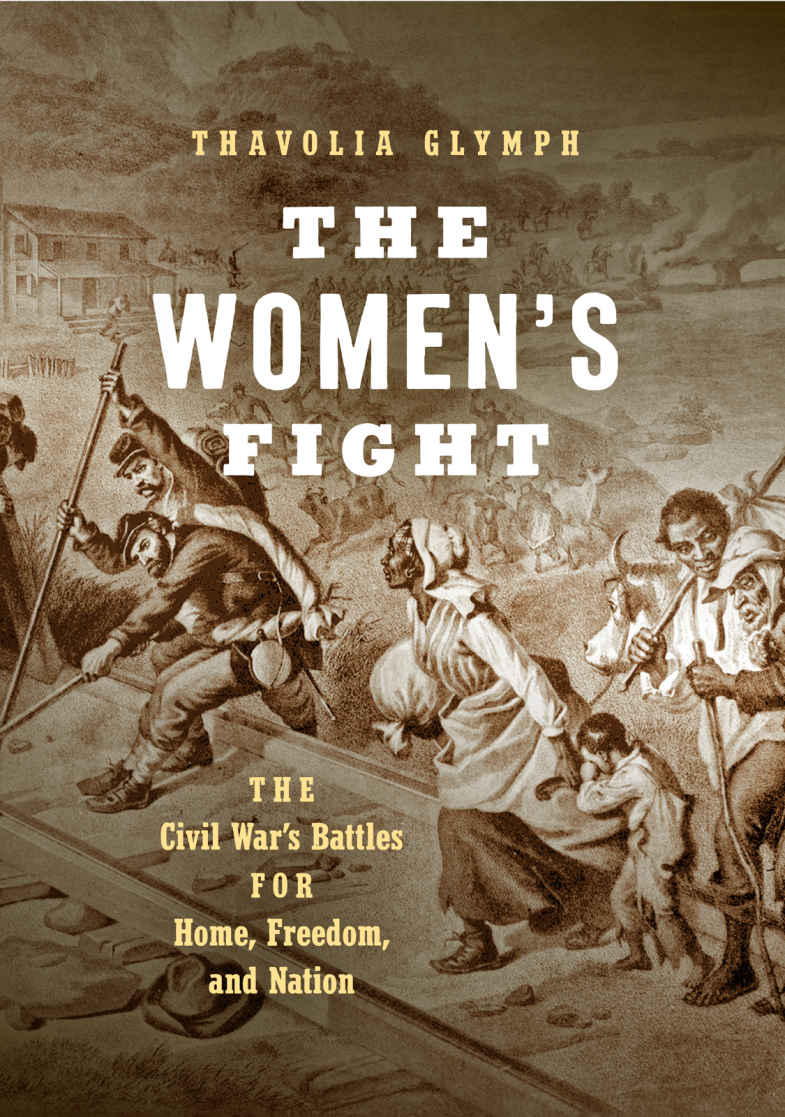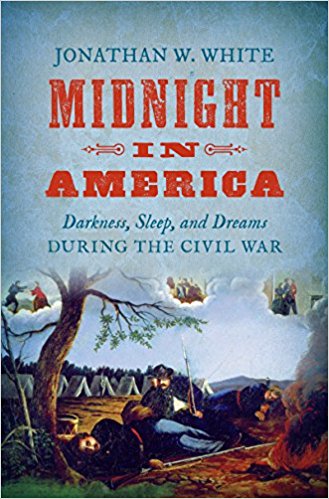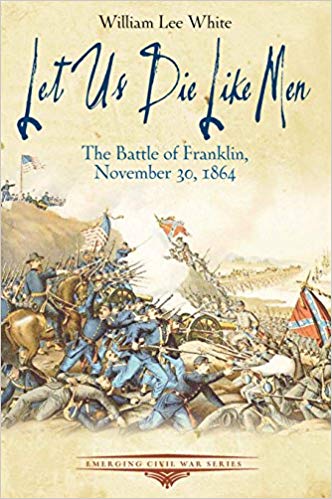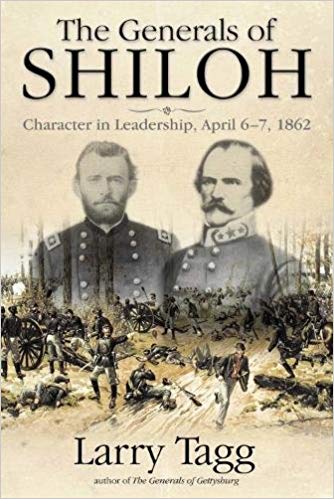“The spaces in which women live during times of war are no more inviolate than the spaces in which men fight, and the two are never completely cordoned off from each other” (5). So asserts Thavolia Glymph in the introduction to her astonishing work, The Women’s Fight: The Civil War’s Battles for Home, Freedom, and Nation. Glymph’s women are an inclusive lot who span the gamut of class, race, and regional identities; free and unfree statuses; and political allegiances. This illuminating volume “revisits familiar questions” about Civil War-era women in new ways, as Glymph recounts the stories of women who were compelled by men to make sacrifices during wartime, but who have rarely been “acknowledged as political” (8, 14). What Glymph compellingly offers is an understanding of how Northern and Southern women fought “among and between” and always in concert with each other. She mines these women’s “struggles and victories in the fights they waged as they came in to contact with each other across borders previously closely restricted and policed by law and custom on the basis of class and race,” as well as the ways that men attempted to control how they might fight this war (15, 259).
The Women’s Fight is divided into three sections. Part One compares the realities and dreams of plantation mistresses, poor white women, and enslaved Black women as they struggled to navigate the violence that disrupted economic and social systems. Several of this work’s achievements lay inside this first section, as Glymph explores the meanings of poverty for white women and how enslaved women used the chaos of war to carve freedom for themselves.
Perhaps more than any work in recent memory, Glymph thoughtfully analyzes how the Confederate project allowed poor white women access to vaunted white womanhood, even as their existence undercut the lie that Confederate soldiers fought to protect white women (56, 59). Glymph reveals that poor white women often resented the Confederacy as an institution that called upon impoverished white people to sacrifice the most for their failing war effort. Glymph’s study also chronicles vicious classism. Elite white women grew indignant at the poor “corn women” who demanded welfare from the Confederate state (74, 84).
Further, Glymph beautifully analyzes how enslaved women “fought to destroy” enslavers’ feudal society (88). Diving into the military records, memoirs, and interviews that documented enslaved and freedwomen’s responses to a war that promised emancipation, Glymph uncovers how Black women built on their antebellum resistance to enslavement during the war years. Far from passive, apolitical bystanders, enslaved women asserted to federal officers that enslavers’ mansions “oughtto be burned”; protected crops that they viewed as their property; and served the United States Army as informal intelligence officers who often shielded soldiers in enemy territory (90, 97, 106). While her study also accounts for the rarely examined racism and sexual abuse that Black women suffered at the hands of white Union men, Glymph carefully investigates the legacy of Black Southern women’s wartime bravery and tenacity. Subsequent generations of freedpeople commemorated an ideal Black womanhood. One version of “The Bonnie Blue Flag,” for instance, inverted Confederate pride to celebrate “radical girls” who would be free by any means necessary (117, 123).
Glymph’s major triumph, however, is her passionate revelations about the Black Southern and Northern women who encountered one another in the Reconstruction South. Voluminous work exists that studies the white Northern women teachers and missionaries who headed into the war-torn South (they are not absent from Glymph’s pages). Yet few historians have explored how Black Southern women fought against the paternalism that characterized their interactions with white Northern women. These white Northern women may have been compelled by the social gospel to assist newly freedpeople, but they were nevertheless infested with racist assumptions about Black women’s characters and abilities.
Black freedwomen also pushed back against Black Northern women who attempted to condescend to them, including Sojourner Truth, whose respectability politics earned her the resentment of refugee women in Washington, D.C. (181). Glymph writes compassionately of Harriet Jacobs, who famously escaped slavery. Perhaps less famously, she ventured into Reconstruction Virginia as a teacher who suffered racism from white Northern counterparts—and drew the suspicion of Black freedpeople. Unlike Truth, however, Glymph records that Jacobs ardently emphasized that both slavery and Northern apathy had combined to make Black refugees “stupid from oppression.” Refugees, Jacobs argued, would benefit greatly from consistent exposure to Black excellence in the form of Black teachers and other professionals (185).
In the end, Glymph’s signal achievement in this work is her recovery of Black women’s autonomy and agency. Black women created space for themselves during the war; now, they have a place in a historiography that has too frequently rendered them invisible.
Misti Nicole Harper is a Visiting Assistant Professor of History at Gustavus Adolphus College.





